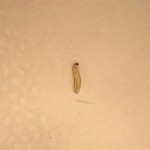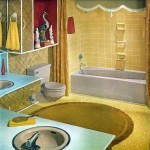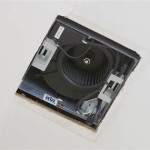How To Replace a Bathroom Ventilation Fan
A properly functioning bathroom ventilation fan is crucial for removing excess moisture and preventing mold and mildew growth. A faulty fan can lead to costly repairs and health issues. Replacing a bathroom ventilation fan is a manageable DIY project that can significantly improve indoor air quality and protect the home's structure. This article will guide you through the process of replacing your old bathroom ventilation fan with a new one.
Safety First: Power Down and Preparation
Before starting any electrical work, ensure safety by turning off the power to the bathroom circuit at the main electrical panel. Verify the power is off by flipping the light switch and testing the fan. Gather the necessary tools, including a voltage tester, screwdriver, wire strippers, pliers, safety glasses, and a dust mask. Having the right tools will streamline the process and enhance safety.
Removing the Old Ventilation Fan
Begin by removing the cover of the existing ventilation fan. Typically, the cover is secured by spring clips or screws. Once the cover is removed, carefully examine how the fan housing is attached to the ceiling joists. Most are secured with screws. After disconnecting the wiring (taking note of the wiring configuration - take a photo!), unscrew the housing from the joists and carefully lower the old fan.
Assessing the Existing Ductwork
Inspect the existing ductwork for any damage, kinks, or blockages. Ensure the ductwork is properly connected to the fan housing and vents to the exterior of the home. If the ductwork is damaged or inadequate, this is an optimal time to replace it. Using rigid metal or PVC ductwork is recommended for better airflow and reduced noise compared to flexible ductwork.
Choosing the Right Replacement Fan
When selecting a new ventilation fan, consider the size of the bathroom and the fan's CFM (cubic feet per minute) rating. A higher CFM rating indicates a more powerful fan, which is suitable for larger bathrooms. Also, consider the noise level (sones) of the fan; a lower sone rating signifies quieter operation. Energy Star certified fans are a good choice for energy efficiency. Finally, ensure the new fan's housing dimensions are compatible with the existing ceiling opening.
Installing the New Ventilation Fan Housing
Position the new fan housing in the ceiling opening and secure it to the joists using screws. Ensure the housing is flush with the ceiling and properly sealed to prevent air leaks. Use caulk or weatherstripping to create an airtight seal around the housing perimeter. This will maximize the fan's efficiency and minimize noise.
Wiring the New Ventilation Fan
Connect the wiring of the new fan to the existing wiring in the ceiling, matching the wire colors accordingly. Typically, black wires connect to black, white to white, and green or bare copper wires to the ground wire. Use wire nuts to secure the wire connections. If the existing wiring appears damaged or inadequate, consult a qualified electrician.
Testing and Finishing Touches
Once the wiring is complete, restore power to the bathroom circuit and test the new fan's operation. The fan should run smoothly and quietly. Attach the new fan cover, ensuring it fits securely. Finally, apply a bead of caulk around the perimeter of the cover to seal any gaps and prevent air leaks. Clean the area and discard the old fan according to local regulations.
Troubleshooting Tips
If the fan doesn't work after installation, double-check the wiring connections to ensure they are secure and correctly matched. Verify the circuit breaker hasn't tripped. If the fan is making excessive noise, check for obstructions in the ductwork or loose parts within the fan housing. If issues persist, consult a qualified electrician.
Maintaining Your New Ventilation Fan
To ensure the longevity and efficiency of your new ventilation fan, regular maintenance is essential. Vacuum the fan grill periodically to remove dust and debris. Lubricate the fan motor as recommended by the manufacturer. Inspect the ductwork occasionally for any blockages or damage. By following these simple maintenance steps, the ventilation fan will provide years of reliable service.

How To Replace A Bathroom Fan With Pictures Wikihow

How To Replace A Bathroom Fan With Pictures Wikihow

How To Replace Broan 670 671 And 688 Bathroom Fan Assembly

How To Install A Bathroom Fan Step By Guide Bob Vila

How To Install A Bathroom Exhaust Fan

Remove Install A Bathroom Fan Grille In 1 Min

How To Install Clean A Bathroom Fan

Installing A Bathroom Fan Fine Homebuilding

Replace A Bathroom Fan Broan

How To Replace Or Install An Easy Bath Fan The Home Depot







